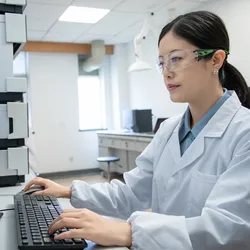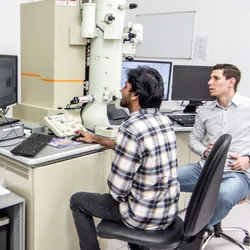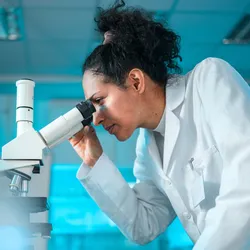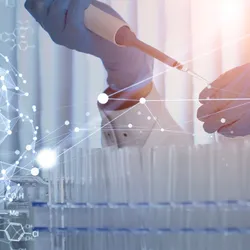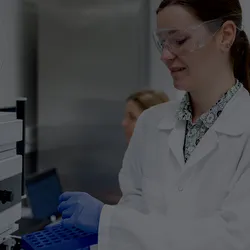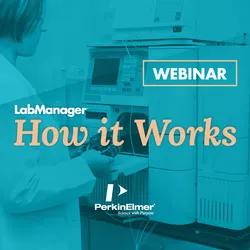Adam J. Hopkins, PhD, is the spectroscopy product manager for handheld and laboratory instruments at Metrohm USA since 2016. He has a PhD in chemistry from the University of Oregon where he studied nonlinear optical spectroscopy under Geraldine Richmond. Between graduate school and Metrohm, Adam worked developing spectroscopic solutions for standoff and noncontact sensing applications using LIBS, Raman, and other novel techniques. Hopkins is a member of the American Chemical Society, Society for Applied Spectroscopy, Coblentz Society, and SPIE. He is the author of over 20 peer-reviewed papers and proceedings and three patents.

Adam J. Hopkins, PhD, spectroscopy product manager for handheld and laboratory instruments at Metrohm USA
Credit: Adam J. Hopkins
Q: Please tell us a little bit about yourself and your opinion on spectroscopy's key challenges, particularly concerning lab analytics.
A: I have worked in the field of spectroscopy for almost 15 years doing technology development and now, product management. The primary challenge I observe in spectroscopy is the perception that it is either too limited in scope or too complex to implement effectively. Many labs and customers face significant demands with limited time. Spectroscopy can potentially help solve these issues by streamlining analytical processes. However, misconceptions concerning its limitations or complexity deter users from taking full advantage of the technology. As a result, we end up with a scenario where spectrometers are underused and are not operated to their full potential.
Q: What should lab managers consider when using NIR spectroscopy as opposed to UV-Vis or FTIR for routine analysis? What are the subsequent benefits and the differing calibration procedures involved?
A: There are parts to this whole process, and we can break it down, starting with the decision to use a specific spectroscopic technology. Users are making this decision because they want to stop doing some other type of measurement or to optimize an analytical process. For example, a user may wish to make fewer high-performance liquid chromatography (HPLC) measurements or discard HPLC altogether due to the high costs incurred in keeping those instruments up and running. This decision would be followed by choosing a spectrometer based on what the user wants to measure. If the user wants to measure moisture content, UV-Vis spectroscopy may not be ideal due to its poor response. In contrast, water's strong absorbance could overwhelm Fourier Transform Infrared (FTIR) spectroscopy. UV-Vis provides for rapid quantification but is limited by materials that may not have a unique spectral response. FTIR, mostly used for compositional studies, requires a lot of extra steps regarding quantification, especially surrounding sample preparation. Near-infrared (NIR) spectroscopy offers a middle ground, balancing chemical specificity and ease of use. NIR can penetrate samples deeply, making it suitable for a wide range of analyses with minimal sample preparation. The final part involves calibration. In UV-Vis, this is essentially Beer’s law but in NIR, things are a little more complicated. Building calibration models from quantity analysis with NIR has long been considered difficult, but we have found a way to make this process easier for users.
Q: Metrohm has a new spectrometer, OMNIS NIR, which is described as an efficiency booster for the lab. How does OMNIS improve and cater to the needs of a lab manager?
A: The biggest reason for talking about the OMNIS NIR as an efficiency boost for the lab is because this instrument gives back a lot of time to its users and the lab. Time is a valuable resource. An NIR measurement is inherently rapid and often takes less than a minute. In the case of the OMNIS NIR, many of our measurements take around 10 seconds. OMNIS NIR’s rapid analysis capability helps lab users allocate their time more effectively, make faster decisions, and adjust large batch or production processes in real time. I spoke about the complicated nature of NIR calibration earlier. Metrohm's OMNIS Model Developer (OMD) simplifies this process by generating model suggestions automatically from spectral data and reference values, reducing complexity for the user.
Lastly, the OMNIS NIR’s performance is not limited to just one quantitative analysis run. This spectrometer can perform multiple quantitative analyses simultaneously, further enhancing throughput. Take a scenario where users are implementing quality control in polyurethane production. Here, we are measuring moisture content, hydroxyl values, acid values, viscosities or even attempting to get a polymer chain length, depending on which stage of the production process is being considered. Users can combine one or more of these measurements into a single NIR measurement. Combined with the OMNIS, users aren’t just getting one quantitative answer in 10 seconds, but three or five. This is a massive efficiency boost.
On a broader level, another aspect that speaks to lab managers concerns lab safety and consumables. Managers work with health and safety documentation, ensuring secure protocols are being used for relevant chemicals, proper PPE is administered, and many more. Managers may deal with insurance rates related to the lab’s commitments and subsequent operating costs. Implementing a spectrometer like the OMNIS NIR in a lab reduces chemical usage and associated costs. Combined with the lower chemical exposure, this results in substantial cost savings and reduced risk for lab personnel.
Q: How can high-throughput labs improve operational efficiencies by incorporating automation in their analytical spectroscopy workflows?
A: Automation is a game changer for high-throughput labs and takes efficiency to the next level. It is great if a user can measure one sample at a time with high efficiency, but how does that work in a lab with many samples like a fuel testing lab at a refinery or state agency? In such an environment, users have to care about multiple parameters and various tests have to be run. One such variable, the octane number, is crucial for setting fuel prices. It is critical to get this right. In such a situation, the user contends with hundreds of samples to process daily. Incorporating automation in the corresponding analytical spectroscopy workflows can significantly reduce manual intervention and free up personnel for other tasks. The OMNIS NIR can be automated with the OMNIS Sample Robot, allowing labs to perform hundreds of unattended analyses. A user must simply organize the sample, load them into OMNIS with barcode reading, and click run. The robot will pick up each vial one at a time, drop it in the OMNIS, and all of a sudden you have the case for an automated workflow running the necessary octane analyses for the day. Automation at this level can enable seamless operation, eliminate the need for extensive manual sample handling, minimize potential user error, and ensure consistent, repeatable results.
Q: How does maintenance on NIR instrumentation compare to other equipment?
A: There is no comparison, to be honest. We designed OMNIS NIR to be as low impact on the lab maintenance budget as possible. When I look at other traditional analytical instruments, like chromatography systems, titration systems, or mass spectrometers, all of them require a lot of upkeep. You have at least annual, or maybe more, preventative maintenance. This can be rigorous, and time consuming, and involves everything from changing seals and columns to pumping oil or working on the wet and wearable parts inside these instruments. This is important as we need to keep those parts up and running. With an OMNIS, this aspect goes away. There is only an annual lamp and air filter replacement. There is no other extensive maintenance on the OMNIS NIR—the whole process takes about an hour.
Overall, when I look at OMNIS NIR, I see a system that’s been designed from the ground up to make lab operations efficient. We started with the requirement for low maintenance as I just detailed. We made it easier to operate than other spectrometers—no external standards, OMD, or automatic sample recognition. Then we lowered the deployment burden—Windows AD integration, and bidirectional LIMS communications. Finally, we built a process to install it and make it produce useful data quickly. Usually, you get meaningful results on the same day we put it on your bench. How many other instruments can do that?






